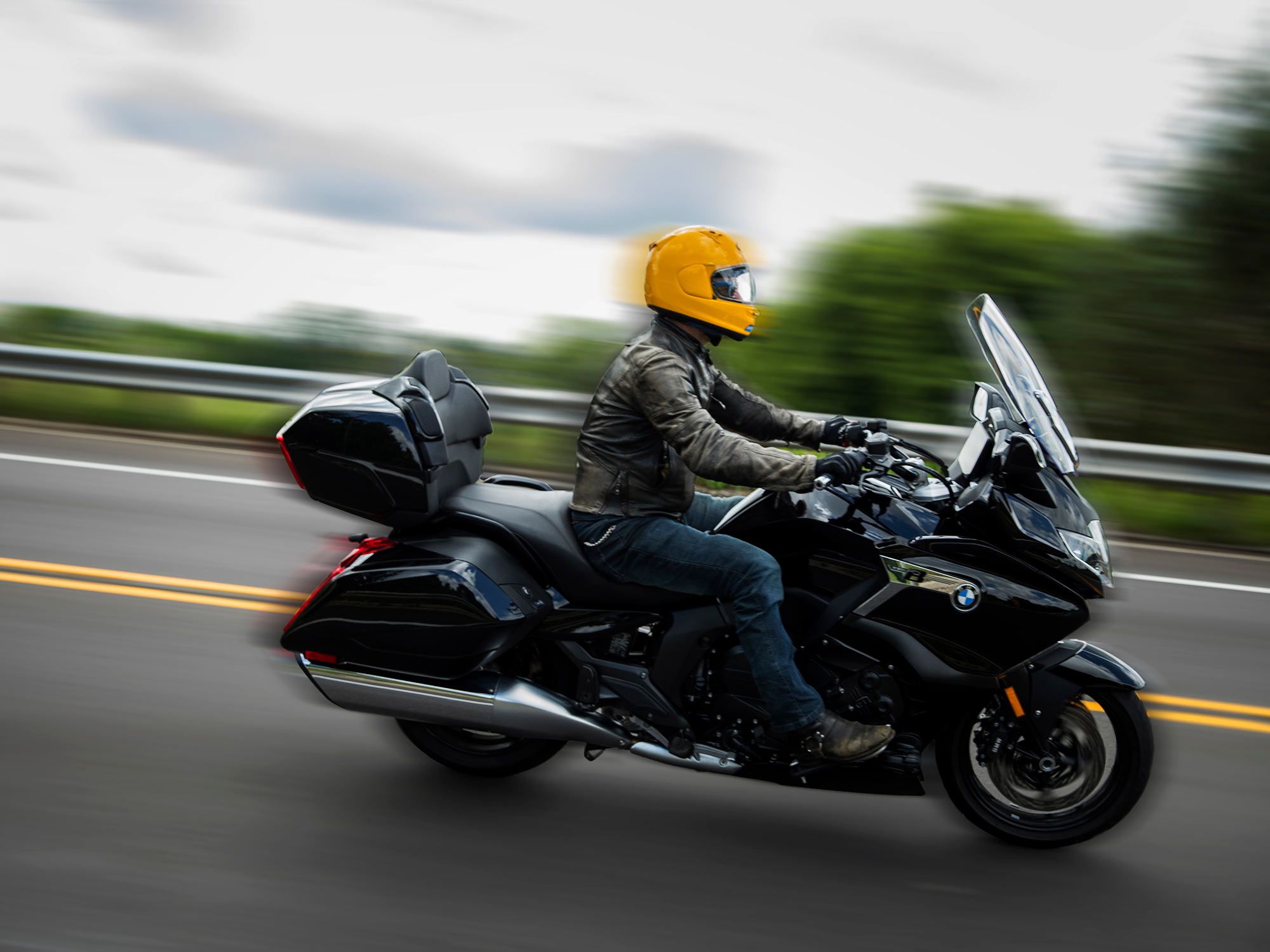
After 11 years, the BMW K 1600 doesn’t do much that’s new or unheard of. It just does everything slightly better than the year before. That’s saying a lot, as the K 1600 is the gold standard in touring. The 2022 Grand America mirrors the landscape it’s supposed to master; Bryce Canyon hasn’t changed in eons, but your new camera takes better pics of it.
The Grand America is America seen through Teutonic eyes. While it was created with American dimensions and landscape in mind, the styling and user interface is still the product of rationality and constant self-improvement.
Let’s get the new bits out of the way. New for 2022 are the headlights, suspension, torque retuning, and a fun and literally cool place to recharge your phone.
First off, the adaptive headlights follow the road. They swivel up and down in relation to the bike’s turning and suspension travel to stay focused on the path ahead. To aid this, the self-adjusting Dynamic Electronic Suspension Adjustment suspension monitors load, angle, and travel to provide a near-uniform ride experience. The unchanged 29.5-inch seat height starts things off in egalitarian style, but after that, the six-axis IMU (and the countless rider aids it controls) does the rest, even as you ride.
The already smooth inline six-cylinder 1,649cc motor still puts out 160 hp, unchanged for 2022, but now develops 133 lb.-ft. of torque, up from 129 lb.-ft. and arriving 1,000 rpm sooner than before. The dynamic mode lives up to its name, with more power arriving at about 2,500 rpm and building steadily until 6K or so.
Finally, a new air-cooled smartphone compartment behind the dash keeps things connected via USB-C port to keep music, messages, and maps displayed on the new 10.25-inch TFT display.
Travel in the company of vintage BMW nerds and the Grand America’s strengths become clear. BMW’s heritage dictates that form is subordinate to function, and their function is to pile on miles with zero drama, hits to your wallet notwithstanding. BMW motorcycles are designed with six-figure odometer readings in mind.
Wisconsin is Harley country to most, but the Grand America is right at home in America’s Dairyland. The bike’s obvious spiritual connection might be with the area’s generations of German settlers, but the native Potawatomi’s century of loyalty to the ultimately unsuccessful French against British interests might be another. History aside, the region is full of people willing to chat you up about your big, shiny BMW. Or about their first motorcycle, which never turns out to be a Harley.
Over 540 or so miles, the BMW K 1600 Grand America made sure I felt very little of the American landscape through my butt, back, or feet. From the Duolever front suspension to the “next generation” Dynamic ESA, I rode Wisconsin pavement both good and bad (as opposed to just plain bad in Chicago) at the correct height and suspension travel, according to the calculations of Bavarian engineers. Who evidently did a great job, since I didn’t notice much of their hard work. For reference, this 180-pound, 5-foot-11 rider sat on the bike the first day, then never bothered changing anything in a full week of riding.
The BMW’s 809-pound curb weight rides a bit higher than comparable Milwaukee iron. The oil/liquid-cooled inline six leans 55 degrees forward to keep mass down low. Of course, hard cases, speakers, and the adjustable windscreen elevate some of that mass back up. Still, from 20 mph or so, the Grand America gracefully takes flight wherever you point it.
Amid breweries and roadside cheese stands lies the wonderful nothing this BMW was designed to inhabit. Heading west, the rigid rural plat-map grid gives way to curving roads following hills and bluffs and providing blessed relief from the relentless flat monotony that is Illinois. The bike’s sensory reality, from the comically high-pitched starter whine to the effortless power of the narrow six-cylinder mill, is the mechanical equivalent of an understated “Gosh, that’s nice” from a Midwestern rider.
The redline’s at 8,500 rpm, but at 4,500, it sounds like an M3 racing alongside you. But it’s just you and those giant 6-into-2 pipes. Just laugh to yourself and shift clutchlessly up. After all, you’re winning at motorcycling.
An alphabet soup of farm roads occasionally brought the Dynamic ESA into play, creating a slight but perceptible “correction” beneath the bike when encountering uneven pavement or swerving to avoid manure or gravel in turns. Considering the Grand America’s size, it’s best to keep the throttle open. Better yet, give it an extra twist. Whether you can tell or not, the Dynamic Throttle Control is always watching your right hand mid-turn. A slight hesitation occasionally gave the DTC away, but never got in the way of the full 160 hp pulling hard.
That clutchless shifting is superb, serving as an unofficial Drag Race mode. You’re on the moto-equivalent of a Winnebago, but 0–60 mph in 3.4 seconds, or so, means you can dust almost anything you’re lined up next to. The clutch is only needed for navigating parking lots. Or three-point turns in the middle of rural two-lane roads, but try not to do that too much. An odd off note: neutral got harder and harder to find as the bike warmed up and was eventually most easily found from second gear.
Engine drag torque control tames any ill-advised downshifting, though it intervenes less in Dynamic mode. I spent all of 20 minutes in Rain or Road mode, where it was perceptible. But I never noticed in the preferred Dynamic mode.
The electronically limited 100 mph limit may be sensible, linked as it is to the Grand America’s supposedly performance-inhibiting footboards, but un-American. The German word would be “bullscheiße.” Escaping danger or rescuing someone far away? BMW policy dictates that heroism comes second. But with the previously mentioned 133 lb.-ft. of torque, you might arrive in time to save the day.
As far as braking, it was near impossible to find the ABS ghost in the machine. Emergency stops brought intervention that could be felt through the handlebars, but the new ABS Pro modulates mid-turn braking nicely, using lean angle to calculate a safe buildup in braking force applied. Forget it exists and chalk it up to your suddenly improved riding technique.
So what about that big 10.25-inch TFT and all the fun buttons?
As an experiment, I went farkle-free to see how the new TFT fared. A new air-cooled smartphone holder with a USB-C recharging port sits behind the dash. This keeps your phone plugged in, which is mandatory since it must remain unlocked to keep the app-provided map displayed on your 10.25-inch TFT. There’s probably an App Development reason for this, but it’s terrible from a UI/UX perspective. It’s understandable to want to harvest as much data as possible from users’ apps (for your benefit, they say), but it’s frustrating to be limited to just the BMW Motorrad app.
The map display does a so-so job of displaying the road ahead. The TFT is great, but you get a superb view of the geography around you with just a small preview of the road you’re actually taking. The text directions are OK, but the issue is the app; downloading maps of individual states doesn’t feel very 2022, and neither does their interface. Best to keep those farkles handy if you like Google Maps or Waze.
The Grand America audio system is nice, with added speakers by the passenger seat. For those going without earbuds or a headset, the speakers aren’t much use above 80 mph, though raising the windscreen brought a sudden improvement in acoustics. While every effort was made to outride the Sirius XM range, the signal held on well until returning to Cook County. Sound-wise, dad rock or ‘90s-era hip-hop are recommended, with Queen and Notorious B.I.G. sounding nice even at higher speeds. Just avoid the acoustic-heavy early catalogs of Led Zeppelin and Pink Floyd.
The instrument layout quickly becomes muscle memory with dedicated windshield and ride mode buttons. The menu button is a bit close to the one for the windshield, though small hands may have compounded the problem. The horn button could also be larger and more centrally located, but the Oldsmobilesque sound of the horn itself helped move slower Wisconsin traffic along.
Four buttons on the left side of the front fairing are dedicated to preprogrammed ride settings and phone pairings. Will four different riders have access to your shiny new Grand America? Not likely. Plus, with the six-axis IMU and the Dynamic ESA always hard at work, the buttons seem superfluous. But hey, cool buttons.
Aerodynamically speaking, the Grand America does a great job of punching through airspace, unless it’s 95 degrees out. The front end allows a long, uninterrupted flow of air to become a cocoon of calm air around the driver. Unfortunately, this means calm summer air can become a de facto sauna. By directing air up from legs and boots on the forward controls, airflow improves. Lowering the windscreen harshes the stereo’s mellow, so improving flow that way is a devil’s bargain. I should note that promptly upon arriving home I discovered the wind deflection wings on the fairing that would’ve helped me stay cooler. Hey, man, that manual is 268 pages long.
Peering over at my friend Gabe on his 1977 R75/7, I was jealous of the wind tunnel’s worth of air flowing through his jacket and boots. His farkle was also doing better work than my giant TFT, which I still hadn’t configured to display any sort of navigation. Sometimes you’ve just gotta figure it out on the way.
Take, for instance, the BMW’s reverse function. After 543.7 miles, I gave in and finally read the manual. Turns out it’s a Honda Gold Wing trick, using the starter motor and reverse polarity. At least I entertained diners at Pancho & Lefty’s BBQ in Monroe, Wisconsin, as I tiptoed the Grand America out of a downhill parking spot. You’re welcome, folks.
The next stop at Bridges Bar & Grill in Brodhead, Wisconsin, went better, and with renewed confidence we traveled to the People’s Republic of Madison, Wisconsin. The next day, filled with last night’s steak and looking forward to the coming day’s poor decisions, we headed north to Sauk City, birthplace of Culver’s; the Wisconsin River, a gorgeous waterway and the first notable tributary of the Mississippi; and a bougie stop at Taliesin, estate of leaky-roof innovator Frank Lloyd Wright. Tourists note: you can eat at Culver’s and swim in the Wisconsin River, but mere mortals aren’t allowed to simply stroll around Taliesin.
Thankfully, the visitor center has $4 bottled water, which makes the difference between likely and possible heatstroke. We started off as dapper BMW funboys, but sweat stains and bug juice meant no one sat within two tables of us. Hasn’t anyone figured out a NASCAR-style “cool suit” for riding? C’mon, BMW.
The search for curvy roads led us south again. The Grand America’s 7-gallon fuel capacity means it’s easy to forget the last fill-up. I saw a fuel gauge somewhere in the display options, but forgot where. I assume it’ll pop up again before I’m out of gas, which it does, displaying real-time miles remaining on the tank. I got it down to 6 miles left before I chickened out and refueled. City fuel economy averaged in the lower 30s, while extended highway droning reached the lower 40s.
The standard equipment Bridgestone Battlax Sport Touring tires are great on grooved concrete and even the odd metal-grated bridge. The unusual Duolever front suspension means zero brake dive, but gives a vague, if but very stable, feel when cornering. Strangely, you get 4.5 inches of travel in the front, 5.3 inches in the rear. Unless you’re launching off speed bumps, you probably won’t notice, as front damping is excellent.
A storm front the size of Connecticut approaches, so it’s time to either retreat to Illinois or heroically make it back to Madison. I chose heroism, arriving back at a friend’s in time to watch a Mordor-like storm sluice several hundred bug carcasses off the Grand America’s windshield.
Home at last, I ride with a friend and his 1984 BMW RS100RS to close out the Grand America experience. With his airhead soon to be sold on Bring a Trailer, he rode more gingerly than I did on my $33K behemoth. Although the Grand America’s DNA comes from the K100 “Flying Brick,” Hans Muth’s “Reisesport” design counts as an ancestor. Side by side, you see the evolution of the touring form, even if it’s hard to believe the two are separated by more than 40 years.
Then, as now, their form remains subordinate to a single unchanged function: circling the globe as easily as possible. Until BMW inevitably refreshes the line, the 2022 BMW K 1600 Grand America remains one of the plushest ways to see this country on two wheels.
Gott segne Amerika!
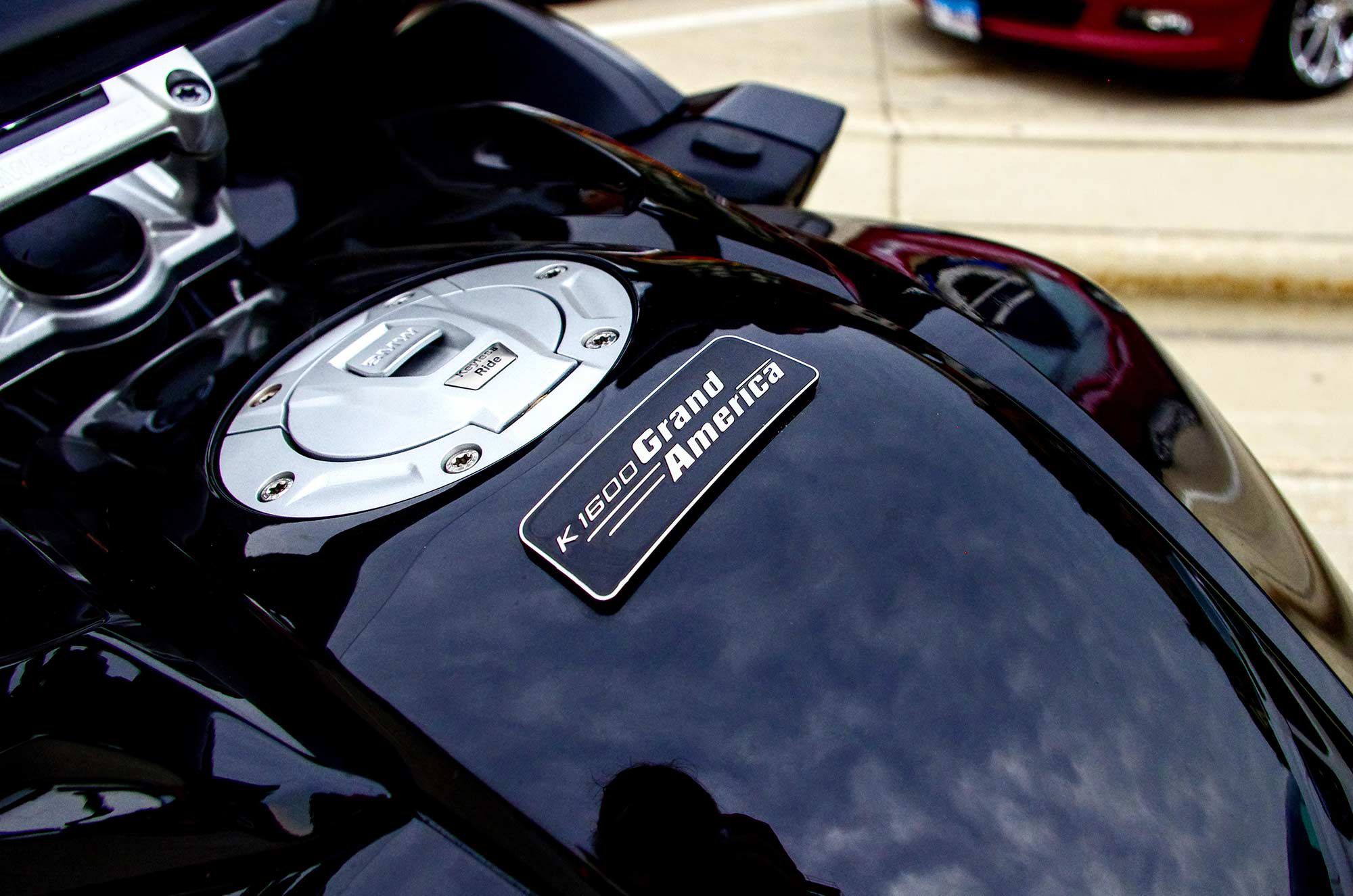
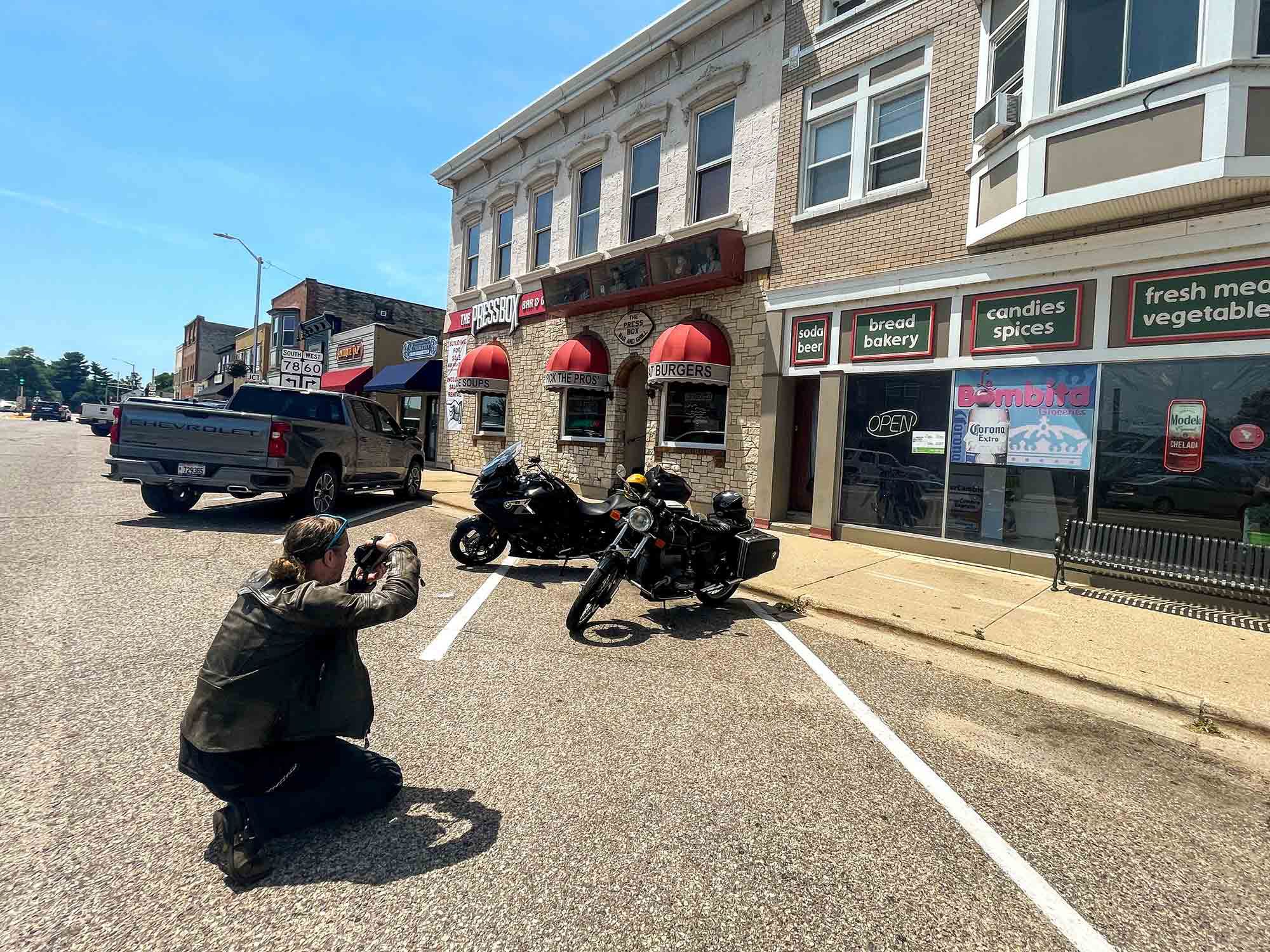
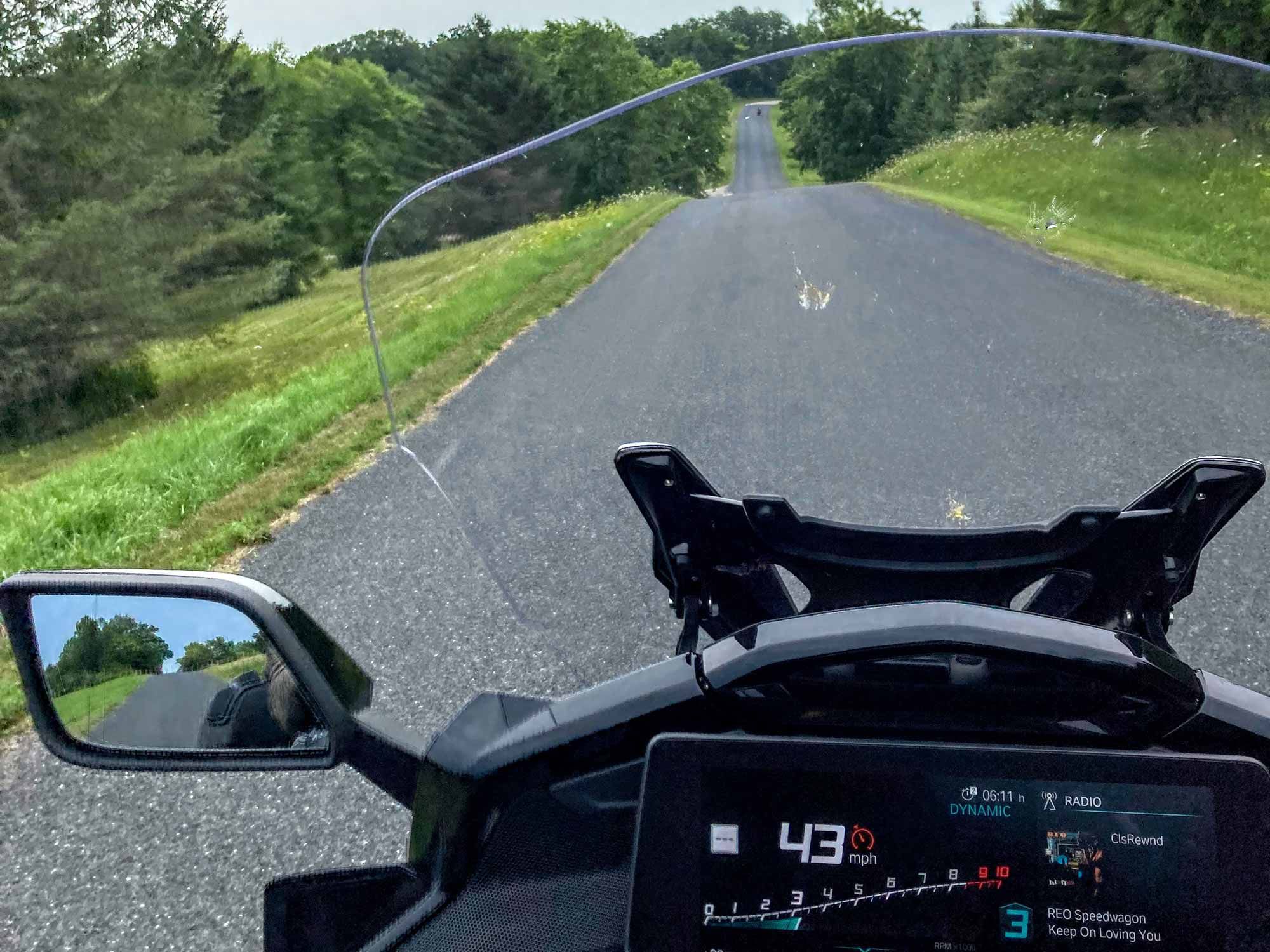
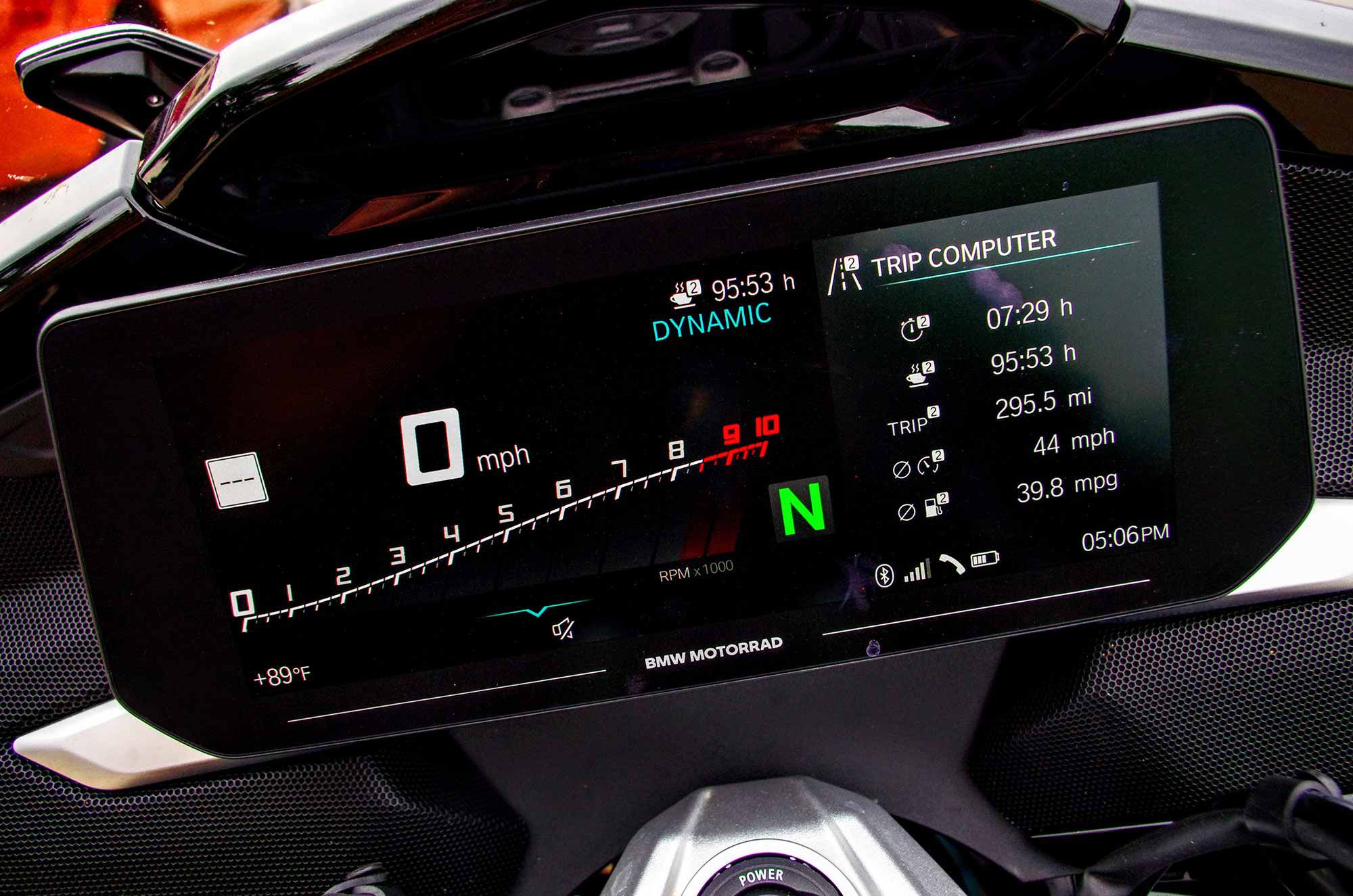
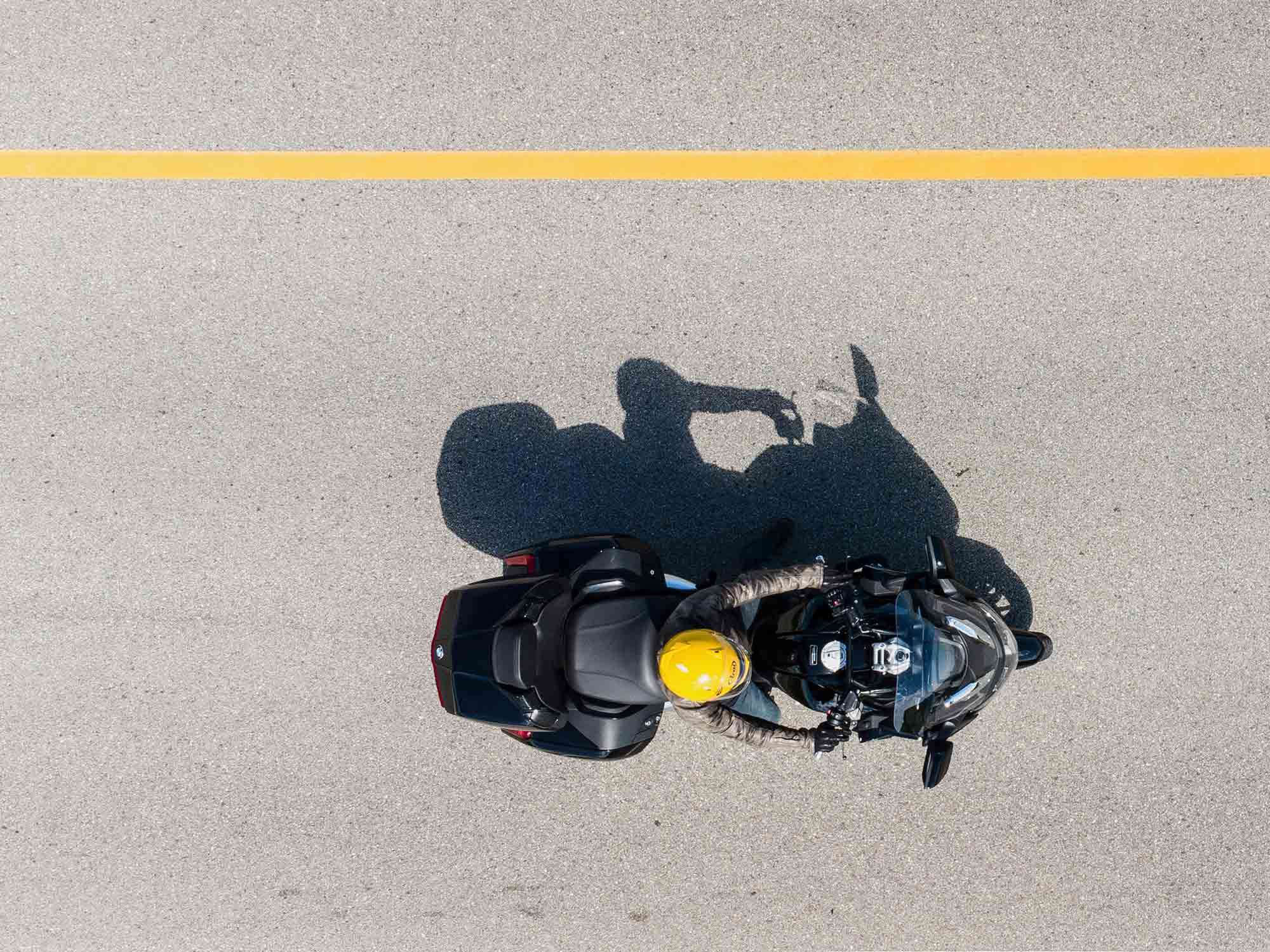
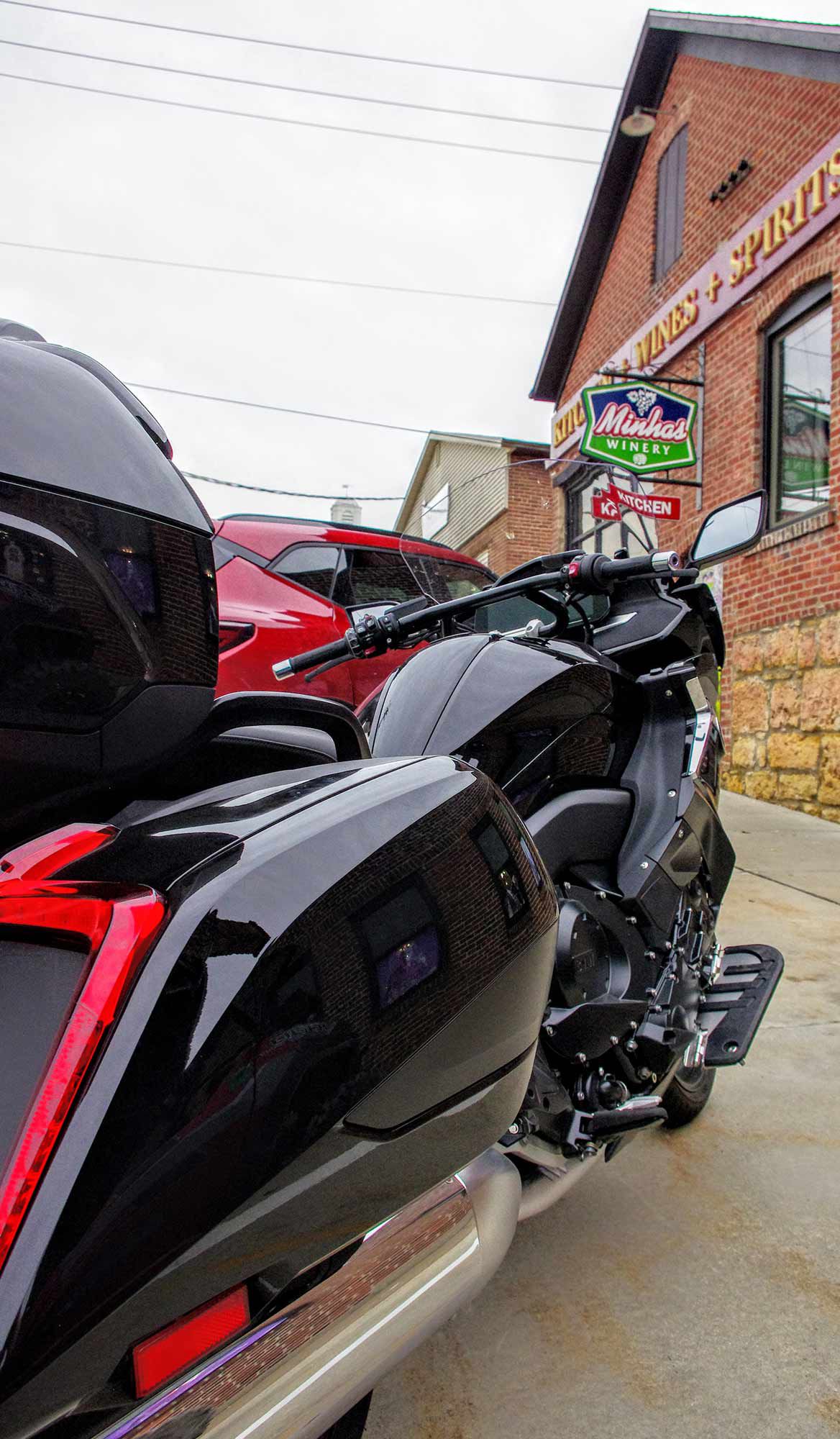
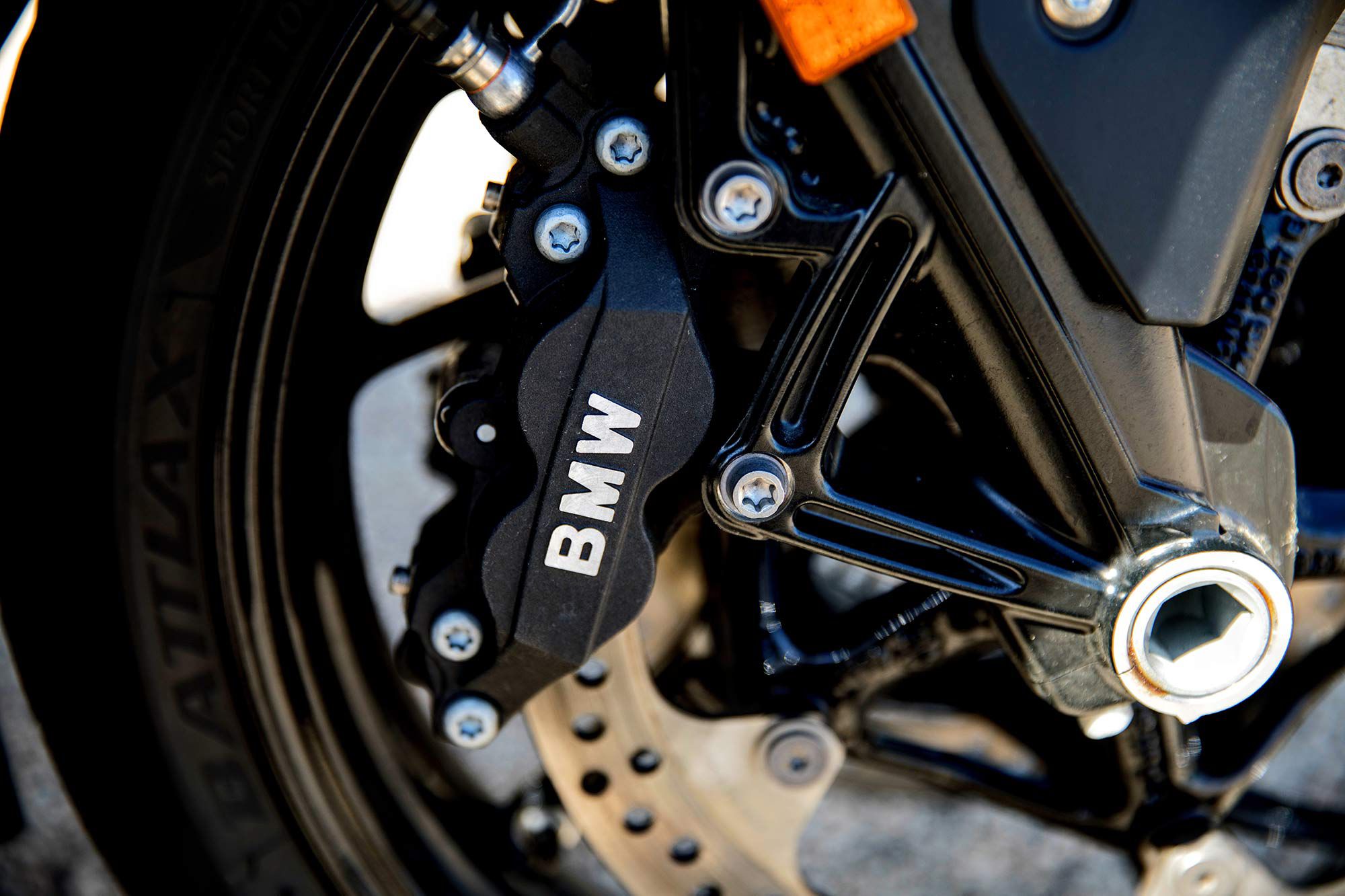
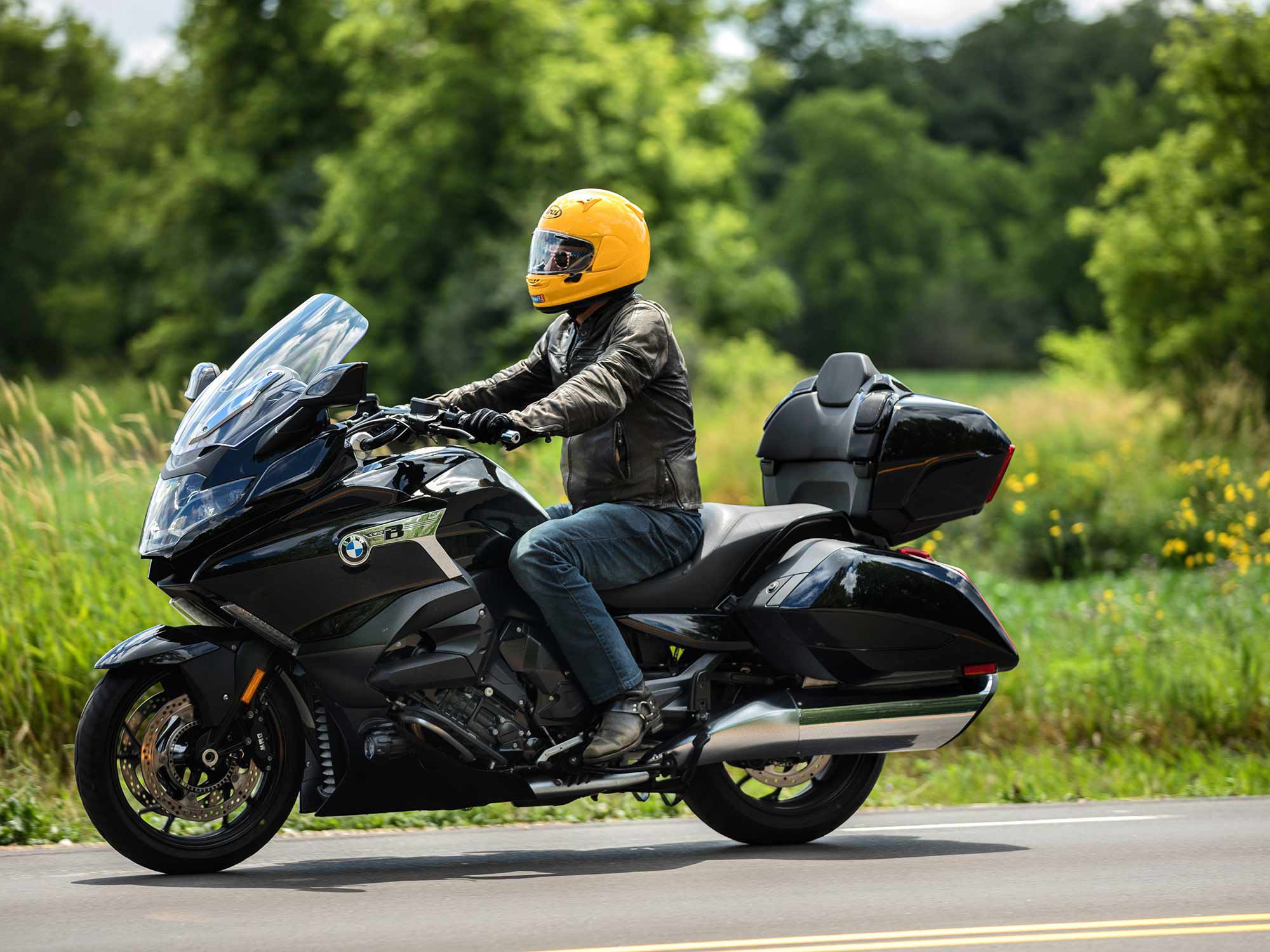
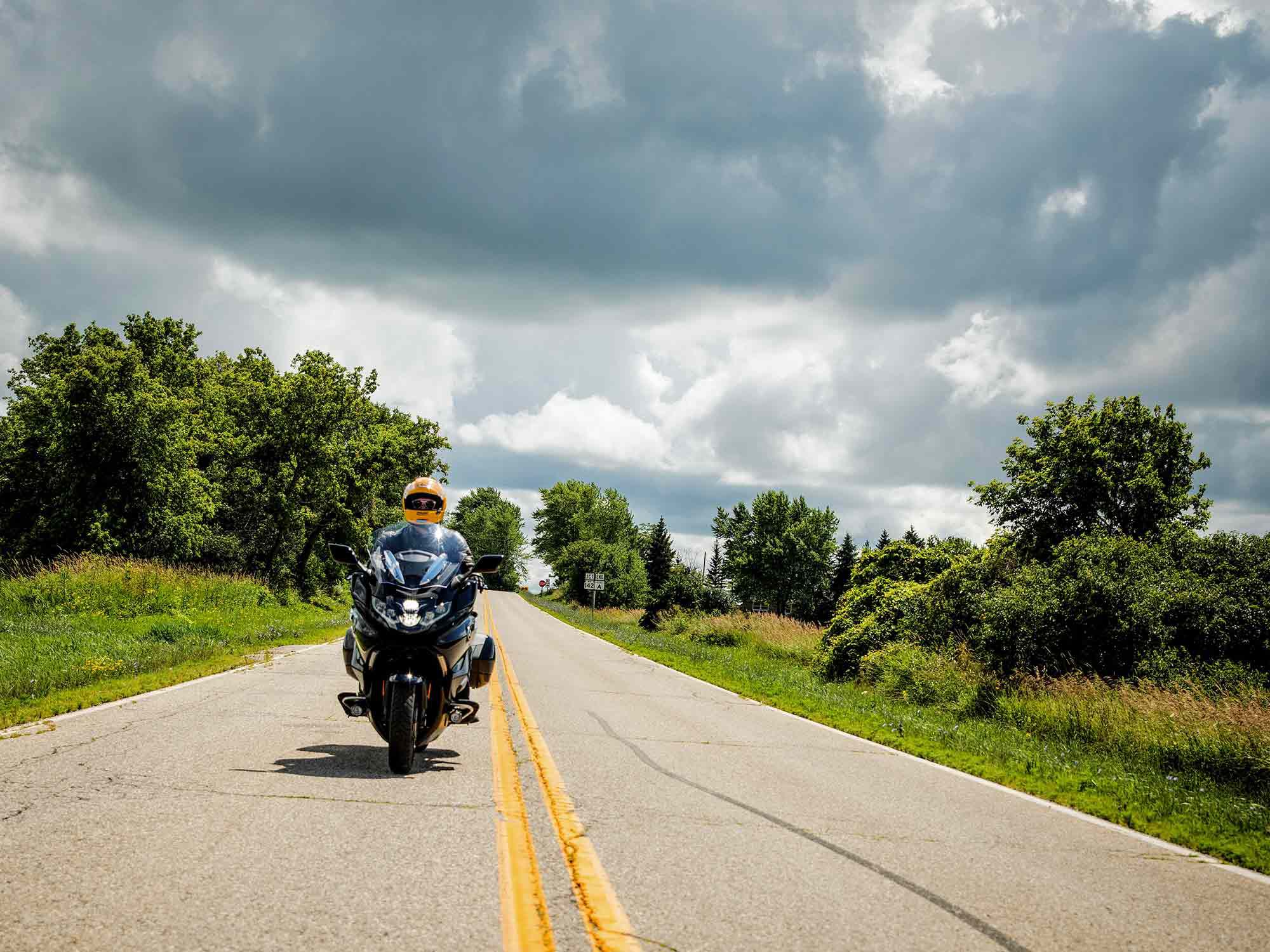
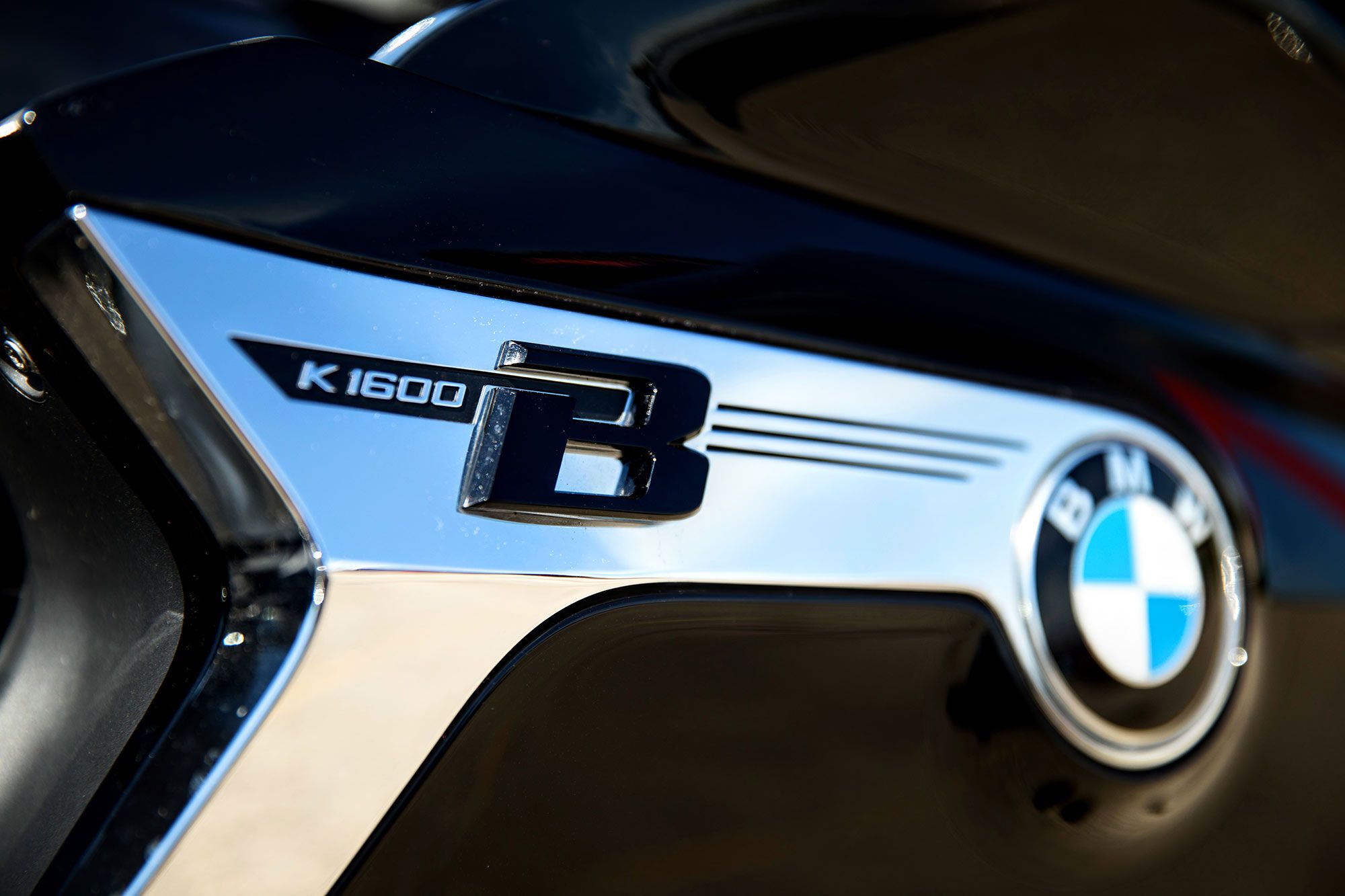
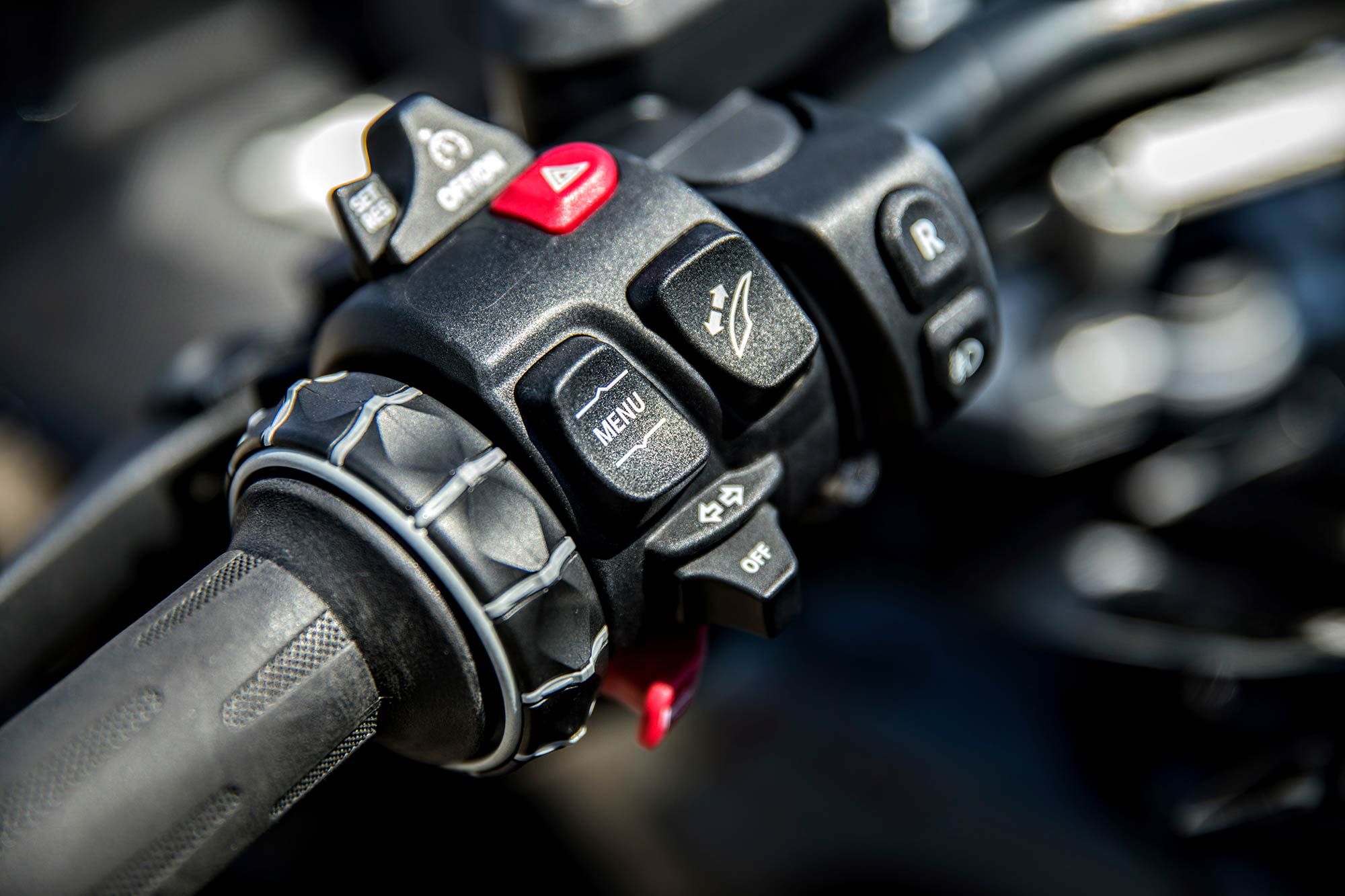
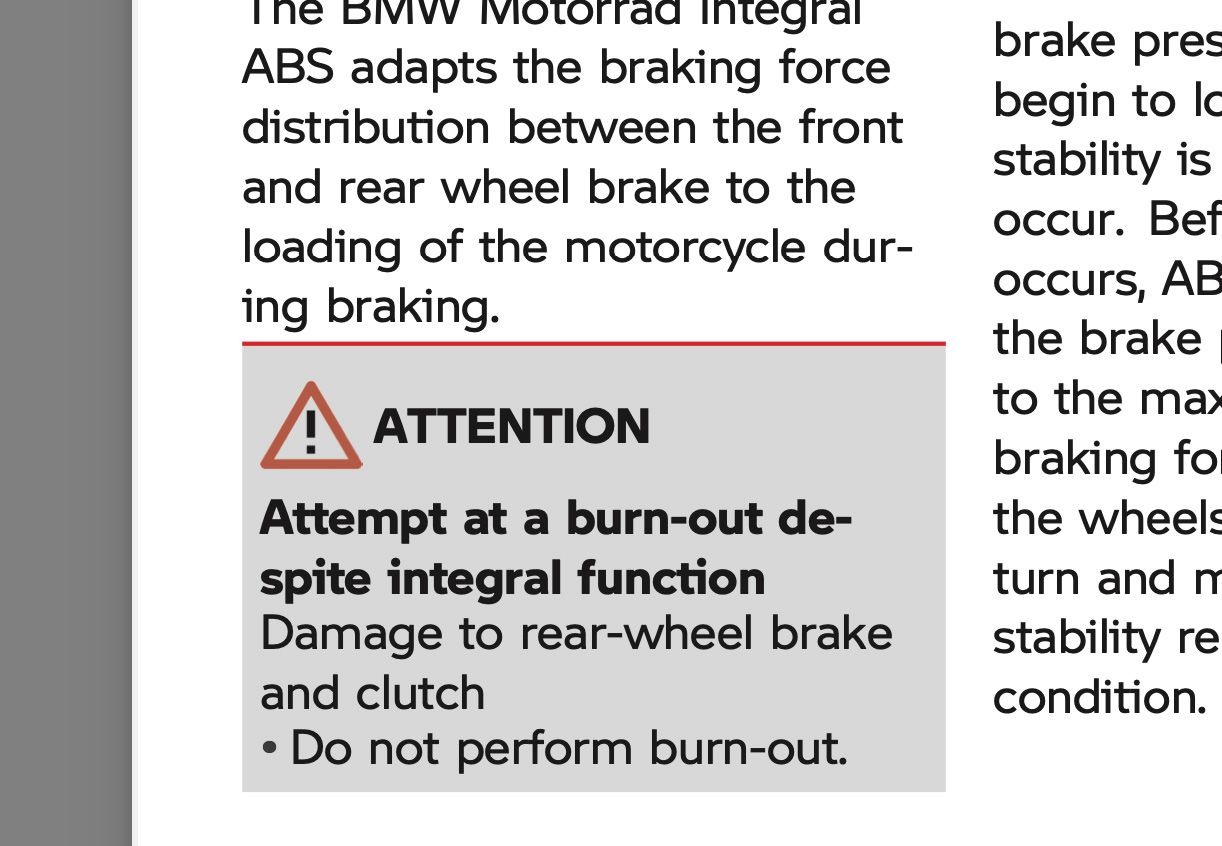
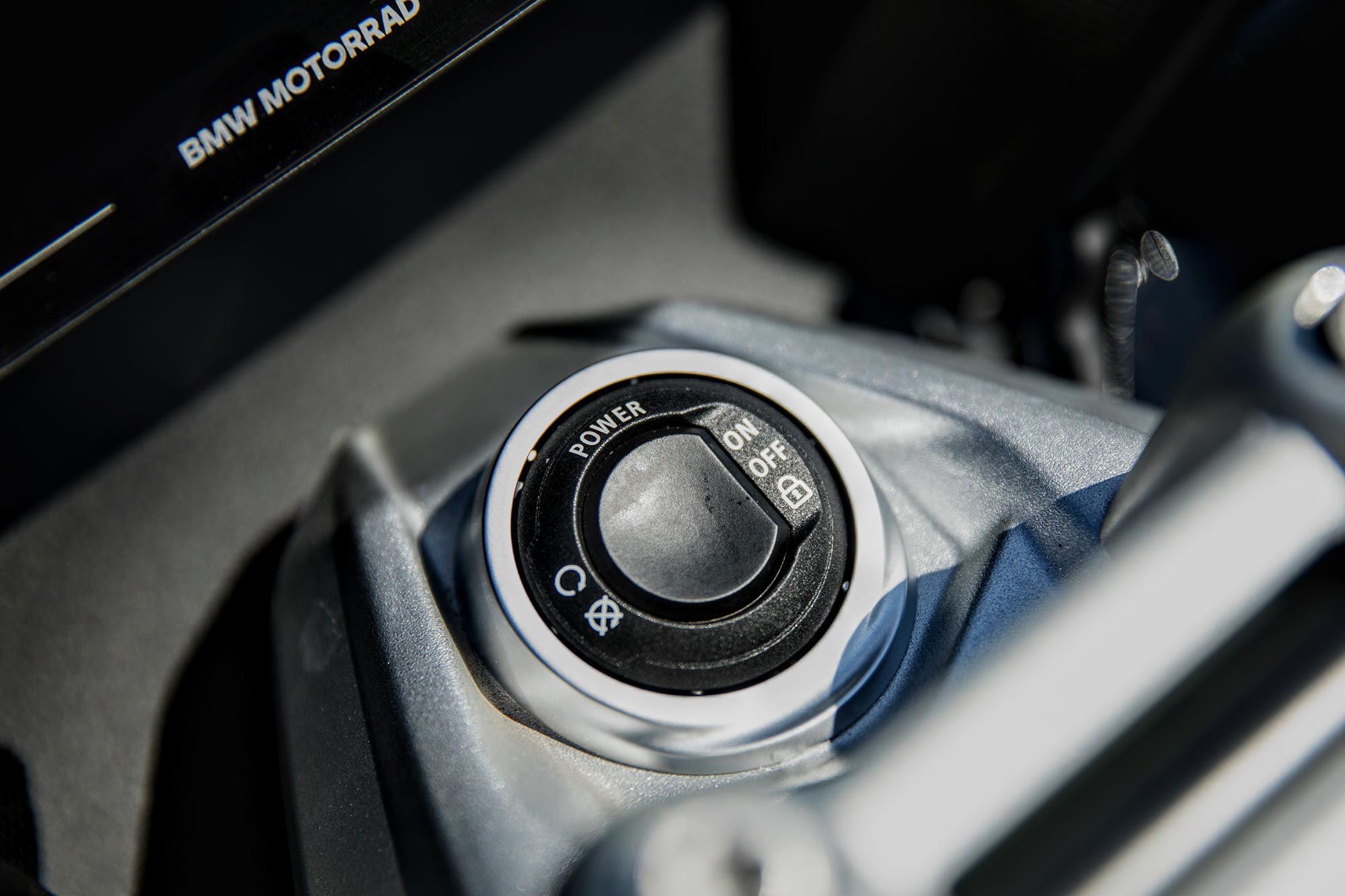
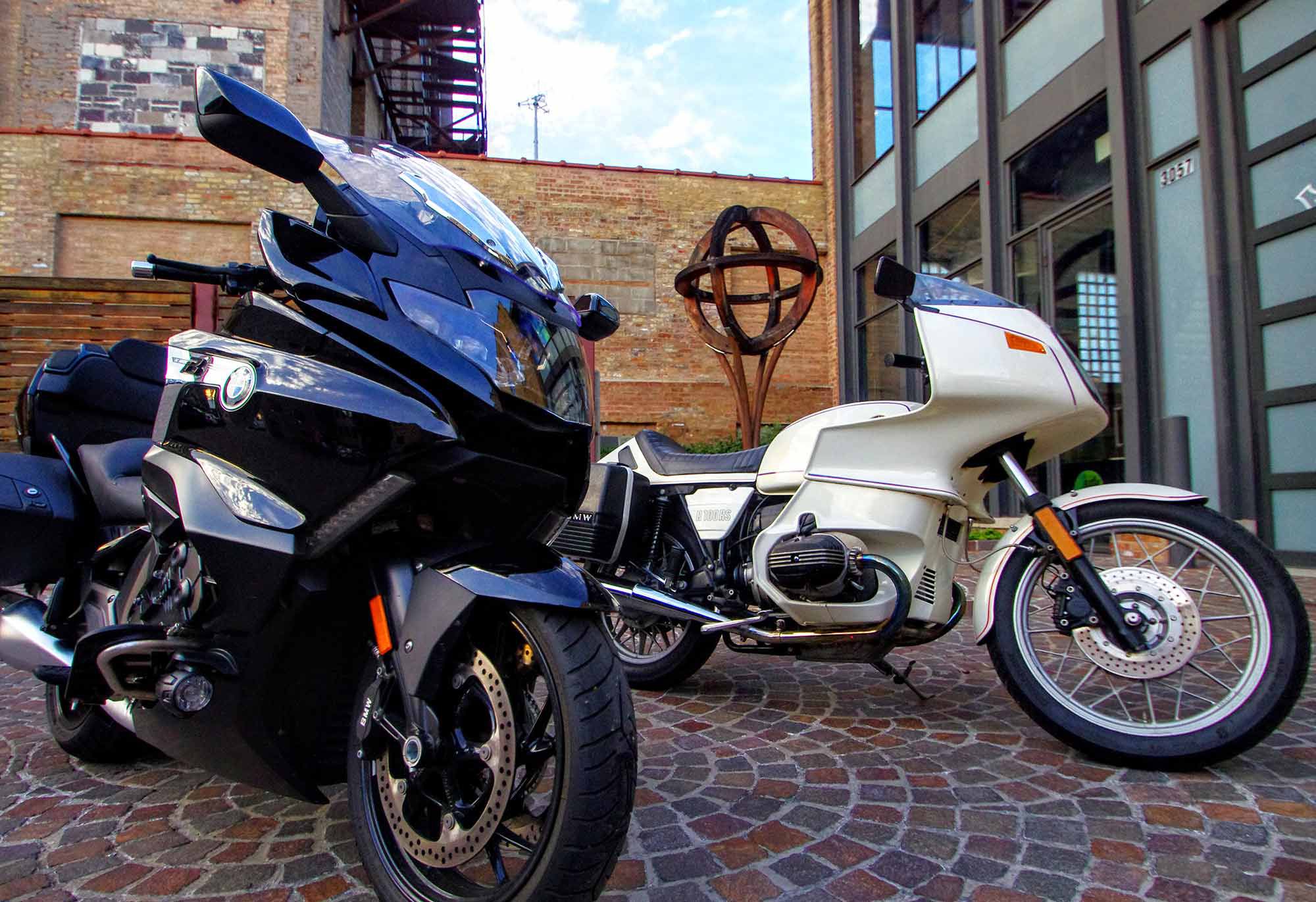
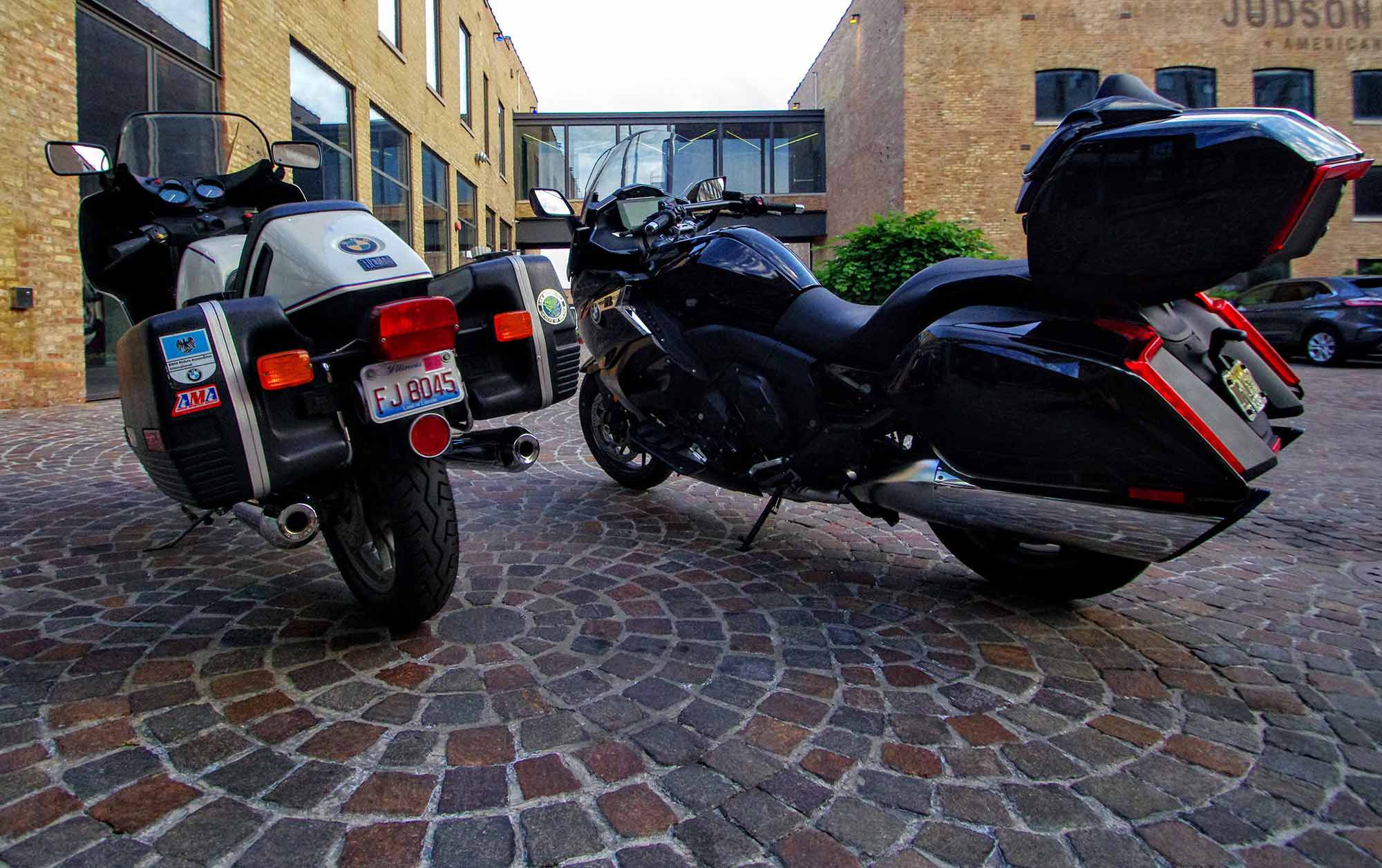
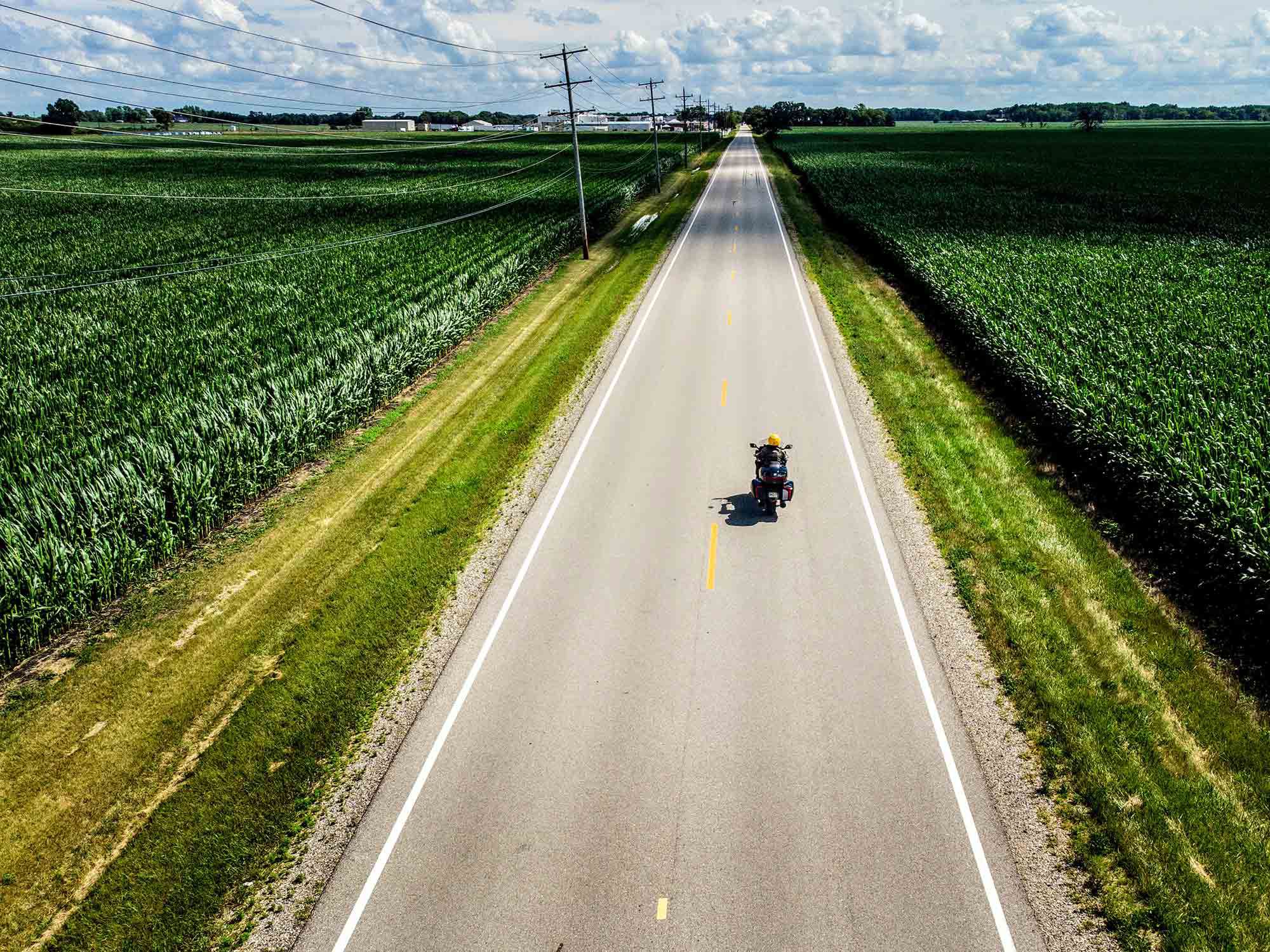
2022 BMW K 1600 Grand America Technical Specifications and Price
| PRICE | $27,465 (base), $32,475 (as ridden) |
| ENGINE | 1,649cc, liquid-cooled, oil-cooled inline 6-cylinder; 4 valves/cyl. |
| BORE x STROKE | 72.0 x 67.5mm |
| COMPRESSION RATIO | 12.2:1 |
| FUEL DELIVERY | Electronic intake pipe injection digital engine management system: BMS-O with throttle-by-wire |
| CLUTCH | Multiple-disc clutch in oil bath |
| TRANSMISSION/FINAL DRIVE | 6-speed/shaft |
| CLAIMED HORSEPOWER | 160 hp @ 6,750 rpm |
| CLAIMED TORQUE | 132.7 lb.-ft. @ 5,250 rpm |
| FRAME | Bridge-type frame, cast aluminum, load-bearing engine |
| FRONT SUSPENSION | Duolever; central spring strut; 4.5 in. travel |
| REAR SUSPENSION | Cast aluminum single-sided swingarm with BMW Motorrad Paralever; central spring strut; 5.3 in. travel |
| FRONT BRAKE | 4-piston fixed calipers, dual 320mm discs w/ ABS Pro |
| REAR BRAKE | 2-piston caliper, 320mm disc w/ ABS Pro |
| WHEELS, FRONT/REAR | Cast aluminum; 17 x 3.5 in. / 17 x 6.0 in. |
| TIRES, FRONT/REAR | 120/70ZR-17/ 190/55ZR-17 |
| RAKE/TRAIL | 62.2°/4.2 in. |
| WHEELBASE | 63.7 in. |
| SEAT HEIGHT | 29.5 in. |
| FUEL CAPACITY | Approx. 7.0 gal. |
| CLAIMED CURB WEIGHT | 809 lb. |
| WARRANTY | Up to 3 years/36,000 miles |
| AVAILABLE | Now |
| CONTACT | bmwmotorcycles.com |
Source: MotorCyclistOnline.com
